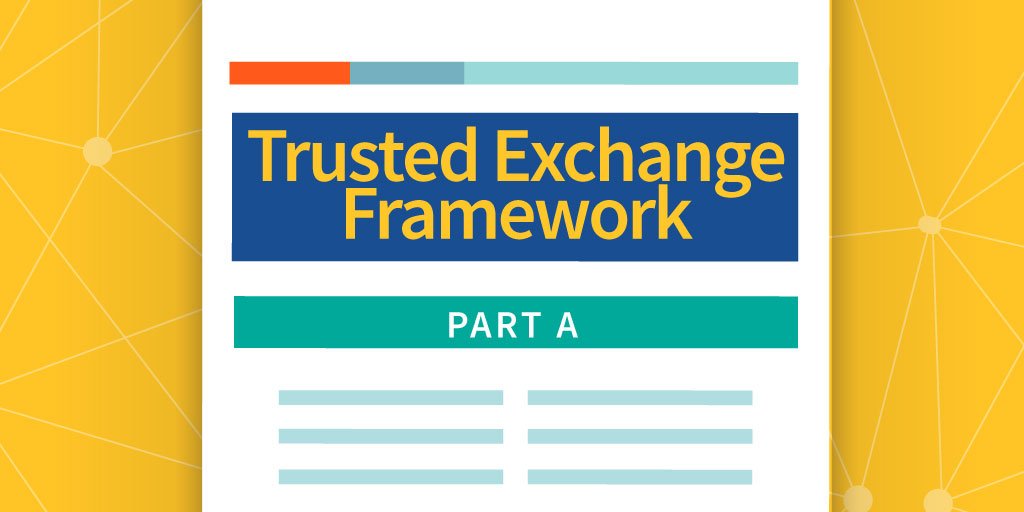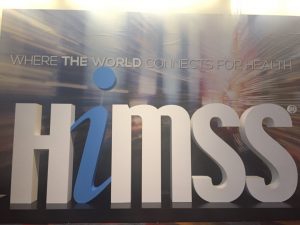The challenge of making interoperability a reality has presented a variety of hurdles to overcome, but a solution to one of healthcare’s longstanding technology issues beckons.
The Office of the National Coordinator for Health IT (ONC) released its draft of a Trusted Exchange Framework and Common Agreement (TEFCA) earlier this year, a policy framework aimed at increasing trust in the exchange of data between healthcare providers.
ONC solicited feedback from the public and the widespread response helped them refine the policy into regulation that could facilitate data liquidity across healthcare’s many stakeholders and heavily influence the data collection and sharing culture that currently exists in healthcare.
“We received about 220 comments back on this and I’m very pleased with that,” Genevieve Morris, Principal Deputy National Coordinator at ONC said during a HIMSS18 education session regarding TEFCA. “And after reading them, I think now more than ever people are seeing that we need data to move.”
The Principles and Conditions of Trusted Exchange
Morris’ session outlined the initial vision of TEFCA, the first part of which established policy to engender trust between Health Information Networks (HINs). It identifies six principles for healthcare networks to adhere to:
- Standardization: Follow federal best practices, policies and procedure standards for information sharing
- Transparency: Perform information exchange publicly
- Cooperation and Non-Discrimination: Exchange information with everyone, even competitors
- Security and Patient Safety: Secure exchange of information that ensures data integrity
- Access: Provide patients and caregivers easy access to health information without special effort
- Data-Driven Accountability: Exchange high volume of records for identification and trending of relevant data
The policy also aimed to establish benchmarks for what is expected of health networks in terms of implementing common practices for members of a network. This includes common authentication processes and a minimum set of organizational and operational policies that enable the exchange of health information between networks.
“We want to get to a place where we can share things between networks as long as you do belong to a network,” Morris said. “We tend to be in healthcare where text messaging was when it first came out. You could send messages to people in your network, but if you wanted to send a text to a person on a different network, you couldn’t do it. Today, you message whoever you want. If you have Verizon, it doesn’t matter if your friends have AT&T.”
At present, many providers have participation agreements in place that enable them to exchange data with other providers. The goal of TEFCA is to build upon that and open a pathway that will allow healthcare stakeholders to join any network they choose. Additionally, it aims to create a competitive market around data services by easing the flow of data.
Julie Maas, founder and CEO of EMR Direct, summed it up this way in a recent Twitter chat.
TEFCA in a tweet: overall goal is to have a single on-ramp to national interoperability w/ ability to do large queries for pop health #HITsm
— Julie Maas (@JulieWMaas) March 23, 2018
“We want to build a competitive market for providing services around data,” Morris said. “We don’t want them competing over the connection you build to share that data or competing for the data itself.” The National Coordinator of the ONC, Don Rucker, also spoke at the conference. He didn’t mince words about the scale of the challenge ONC is facing.
“The thing that makes it hard is that you have to solve for multiple things at once,” Rucker said. “We have to solve simultaneously for the physical wiring, the interoperability stack if you will. We need syntactic standards for data transmission. We have to come to some consensus on semantic interoperability, or what was the meaning of what was transmitted. And finally, we have to deal with the business case and if that weren’t enough, we have to do it all with privacy and security.”
The Plan to Get Information Moving
So how does TEFCA facilitate the flow of information?
It starts with a technical and governance infrastructure to connect HINs through a group of Qualified Health Information Networks (QHINs). Essentially, QHINs act as a network made up of networks. They have the ability to:
- Locate and transmit electronic protected health information between multiple people or entities electronically
- Meet compliance standards
- Be participant neutral
- Have participants actively exchanging data that is part of the US. Core Data for Interoperability (USCDI) in live clinical environments
- Use a connectivity broker, a resource manager of sorts that provides a master patient index, record locator service, the ability to perform different types of queries and electronic health information return to authorized QHINs.
QHINS then become a central part of the interoperable framework, providing data retrieved through a connectivity broker to “participants,” which can be HINs, EHR vendors or other organizations. The end user of the information receives it through the participant.
Reaction to TEFCA
While there are a number of rabbit holes to go down in terms of TEFCA’s details, from what entity coordinates all this to the structure of QHINs to permitted purposes of information sharing and privacy issues, the reaction to ONC’s update at HIMSS was a mixed bag of recognizing its good intentions and skepticism about its structure.
The HIMSS Electronic Health Record Association (EHRA), a trade association of EHR companies, spoke about TEFCA at the conference, with its Chair Sasha TerMaat, director at Epic, pointing to a lack of networks currently capable of qualifying as QHINs.
“A lot of organizations are ruled out of being Qualified HINs by how they define it,” she said in an interview with Healthcare IT News. “And the requirements to be one, there’s a lot of expensive aspects. So any network that would think about doing it is going to have to make big investments in infrastructure, in agreements with their participants, and so forth. My goal would be to unite the networks that already exist today as the fastest way to interoperability.”
But some networks already believe that they are well positioned for an implementation of ONC’s framework. In fact, CommonWell Health Alliance already announced their intentions to become a QHIN.
The idea of QHINs has received some positive feedback, with many seeing it as a logical step toward interoperability. Healthcare attorney and consultant Steve Gravely told EHR Intelligence:
“That’s a good idea — that we have a limited number of organizations that take on the burden of operationalizing the common agreement and really being the backbone of interoperability. Then other organizations work with this finite set. I like the idea of QHINs — conceptually they make a lot of sense.”
With the reaction mixed and the comments needing to be addressed, ONC goes back to work on TEFCA with no shortage of challenges to address before the scheduled release of a final version in late 2018. One thing is certain: the framework is necessary if interoperability is ever going to be a reality in healthcare. What changes industry insiders can expect remain to be seen, but it does appear as though there will be changes.
Rucker sees TEFCA ultimately freeing up data to lay the foundation for a world where innovations around open APIs and solutions based in computer science will play a bigger role in healthcare.Glad to see folks digging into #TEFCA. One note, we did finish up public comment and are working on updating the TEF, so the draft is current state TEF, but won’t be the future state to some degree.
— Genevieve Morris (@HITpolicywonk) March 23, 2018
“I think if you look at data liquidity, you look at the rest of the world and in that app economy you see us all using services that are mashups,” Rucker said. “We’re living in a world where the computer in our pocket or our purse is providing us with lots of new business models all the time. We anticipate that happening in healthcare. If you look at apps in healthcare today, I think it’s a challenge ‘cause you’re looking at things that either just have medical data or they don’t have it all. The opportunity here is in things that synthesize our lives, our environment and our behavior with medical data.”



